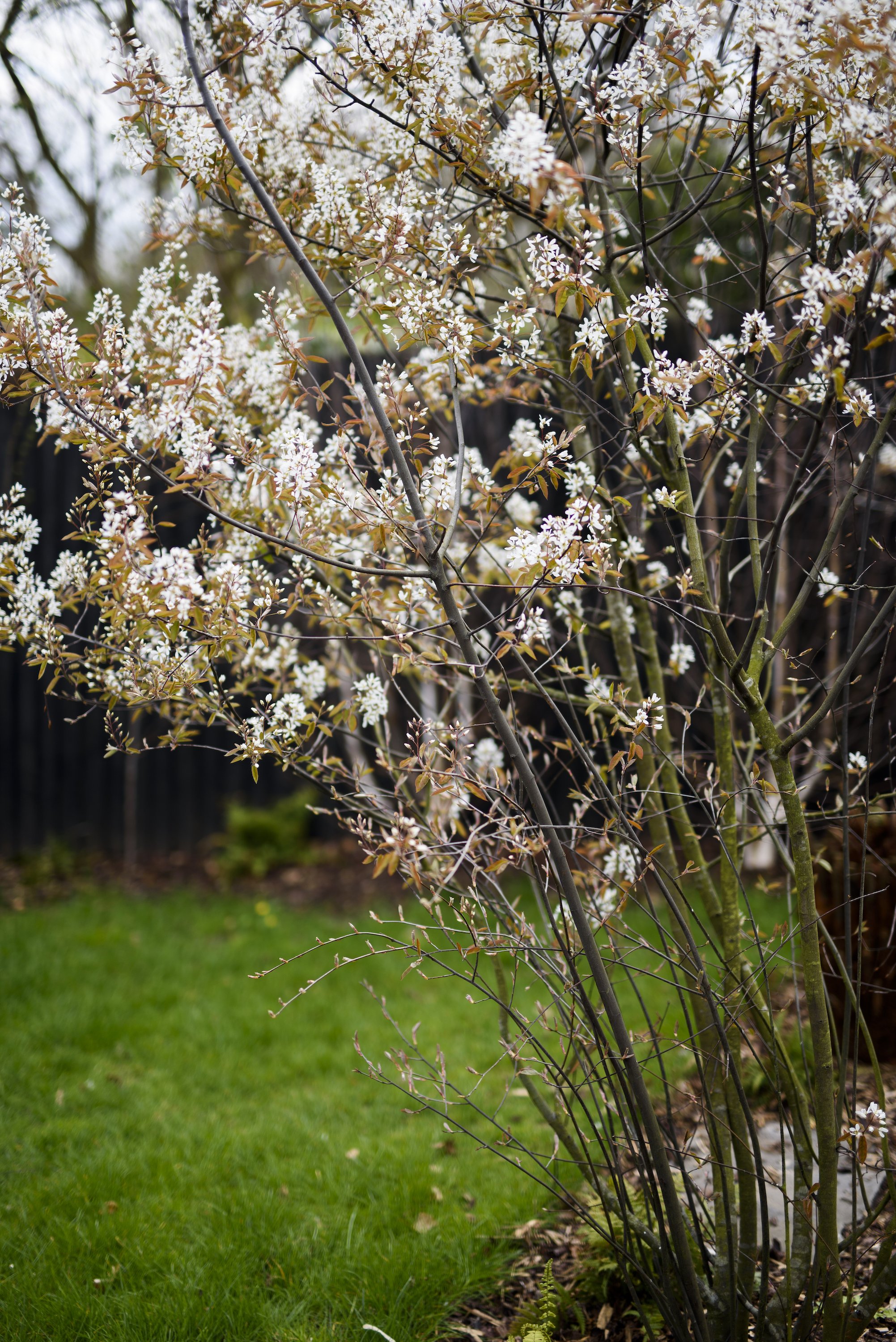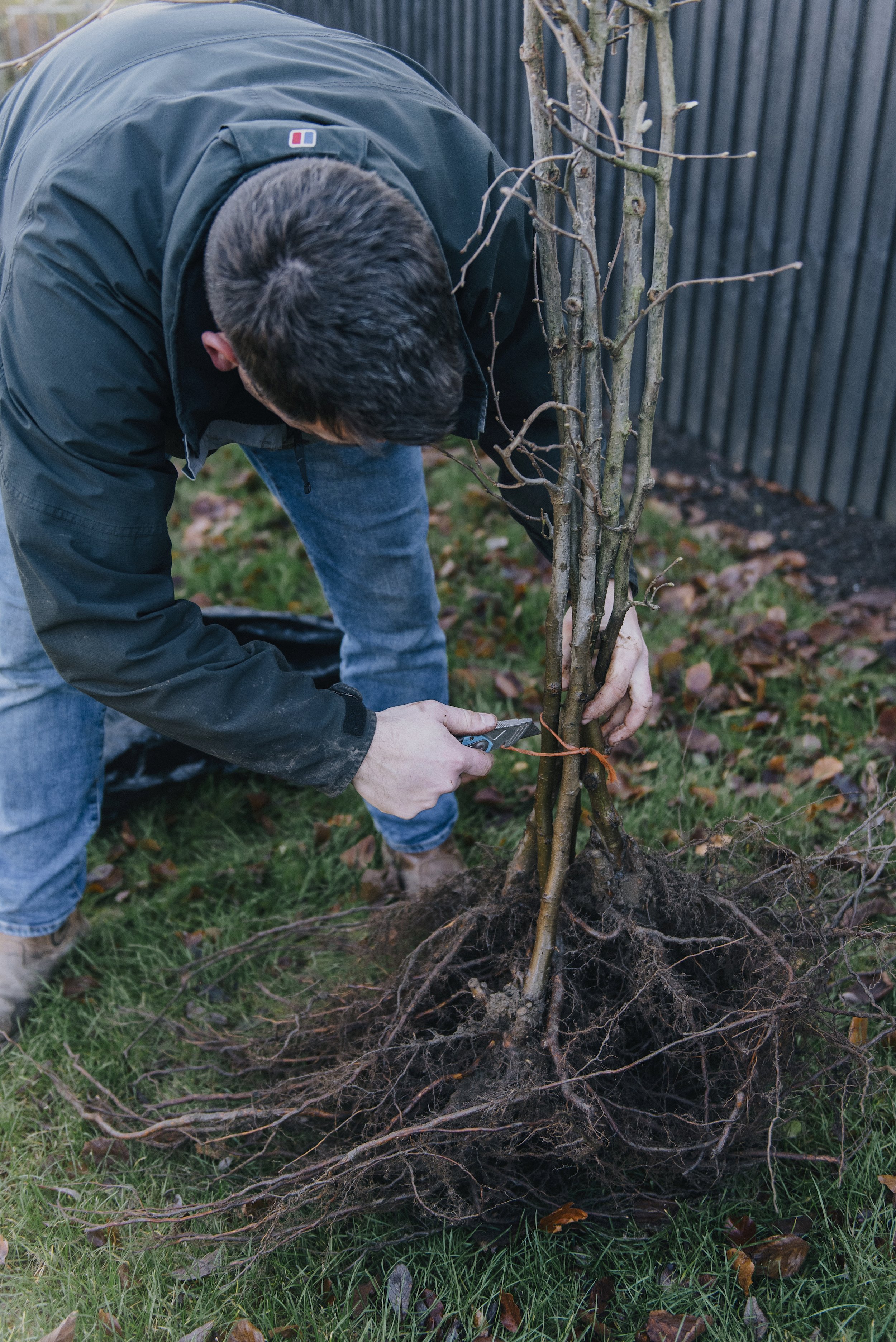Plant guide: Amelanchier lamarckii
One of our favourite trees for a small garden, Amelanchier lamarckii puts on a glorious show all year round.
In Spring, its branches are covered in clusters of small white flowers, often held above one or two of the first leaves, which emerge a deep bronze colour. In summer, the leaves turn to bright green, before the tree produces deep purple berries in late Summer / early Autumn. In Autumn is the final change, as the leaves turn to bright red, before falling for the Winter. If you’ve planted a multi-stem tree (always our favourite), the skeleton of the branches still makes an architectural focal point even in the winter months of bare stems.
It's a small and slow-growing tree, which can easily be pruned if necessary, so it’s perfect for small, urban or front gardens. We like to position them in the eyeline of a window, so you can watch the changes throughout the year from inside the house…
Botanical name: Amelanchier lamarckii
Plant type: Deciduous shrub or small tree. Amelanchier can be grown as a tree, with a single trunk, or as a multi-stem (many individual stems coming out of the ground together…)
Growing conditions: Amelanchier grows best in full sun to part shade, and will tolerate most soil types, though it doesn’t do well in soil with high lime content (soils with higher pH levels).
It can grow in the middle of a lawn, or within a border. It’s not an especially dense tree, so doesn’t cast a huge amount of shade.
Because it’s small, it can grow in a (large) container, but do take care that it doesn’t dry out in hot spells and fertilise regularly as the nutrition in a pot depletes quickly…
Multi-stem Amelanchier create a focal point year-round
The rich purple berries can be cooked for jams, if the birds don’t get them first!
Bright red Autumn leaf colour
How to plant:
Amelanchier can be bought as pot grown or root balled trees.
Pot grown plants can be planted at any time of year, as long as soil conditions are good. See our guide to planting out container grown plants for more info on planting.
Root balled trees are grown in open ground, rather than a container, and have been “undercut” (pruned at the roots) in order to encourage a fibrous root system. They tend to establish quicker than container grown trees, but do need slightly more involved planting.
Plant root balled trees in the dormant months, roughly November to March, when the ground isn’t frozen or waterlogged. Trees may need to be staked or anchored at the roots in order to prevent wind-rock.
Care:
Water well for the first year after planting, especially during any hot spells in the Summer. Weed around the trunk(s) for the first few years, to prevent competition for water and nutrients.
Once established, this is a low-maintenance plant that shouldn’t need much ongoing care. It can be pruned if needed to restrict its size, but it is fairly slow-growing, so shouldn’t need much care initially.
Grow with:
Amelanchier looks good as a statement tree on its own (in the middle of a lawn, or a front garden, for example) but also grows well in a border with other plants.









